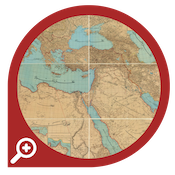 As the 20th century dawned, Europe was in the midst of its belle époque. The Franco-Prussian War of 1870-71 had concluded, ushering in a time of remarkable political stability. Economies were rapidly growing and connecting with each other, new technologies were emerging to enhance people's lives, and the arts were embracing modern forms. The late 19th and early 20th centuries were characterized by the coexistence of several empires. These empires engaged in competition, guided by rationalist policies and theories, with this competition taking the form of colonialism, a race for global influence, and eventual militarization.
As the 20th century dawned, Europe was in the midst of its belle époque. The Franco-Prussian War of 1870-71 had concluded, ushering in a time of remarkable political stability. Economies were rapidly growing and connecting with each other, new technologies were emerging to enhance people's lives, and the arts were embracing modern forms. The late 19th and early 20th centuries were characterized by the coexistence of several empires. These empires engaged in competition, guided by rationalist policies and theories, with this competition taking the form of colonialism, a race for global influence, and eventual militarization.
One of these empires was, however, not truly experiencing a "Golden Age." The Ottoman state had reached its zenith in the 16th century, with its territories spanning three continents, stretching from Hungary to the Persian Gulf and from North Africa to the Caucasus. By the late 19th century, it had significantly weakened, as attempts to modernize the empire along European lines proved futile.
The Beginnings

The heart of the Ottoman Empire was part of the westward Turkic migrations from Central Asia that began in the 10th century. Turks established a lasting presence in Anatolia when the Seljuks, under the leadership of Sultan Alparslan, achieved a historic victory at the Battle of Manzikert against the Byzantines in 1071. The Seljuk Sultanate ruled in Anatolia until the 13th century when they became Mongol vassals. During the decline of the Seljuks, Anatolia was divided into a patchwork of independent states, known as the so-called beyliks.
One of these beyliks was led by Sultan Osman, who, in the late 13th century, at a time when other beyliks were embroiled in conflicts with each other, sought to expand its territories in north-western Anatolia at the expense of neighboring Byzantine lands. In the century following Osman's death, Ottoman rule began to extend over the Eastern Mediterranean and the Balkans.
The Ottoman Empire's rise culminated in 1453, when the Ottoman Army, under the leadership of Sultan Mehmed II (known as "the Conqueror"), captured the Byzantine capital of Constantinople (though Istanbul was the common name for the city in Turkish even before the conquest; in official use by the Ottoman authorities, other names such as Kostantiniyye were preferred in certain contexts).
The conquest of Istanbul marked the beginning of a long period of territorial expansion. The empire thrived under the rule of dedicated Sultans, culminating in the rule of Sultan Süleyman I (known as "the Magnificent"). Conquests were driven by the discipline and innovation of the army, and expansion extended as far as the gates of Vienna, where the Ottoman siege in 1529 failed to capture the city. Meanwhile, the navy established the empire as a significant trading power, and the Ottoman state also flourished economically, thanks to its control of the major overland trade routes between Europe and Asia.
The Ottoman state was dynastic and medieval in its organizing principles, and its official ideology was religious. The government was based on Islamic religious law (sharia), supplemented by royal ordinances and customary law. The main non-Muslim communities were Greek Orthodox Christians, Armenian Gregorian Christians, and Jews. The millet system of communal self-government gave the Ottoman state a multi-ethnic character, which was generally absent in Europe.
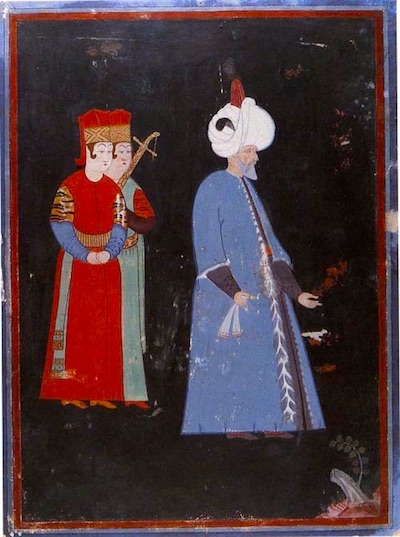
Non-Muslim communities were, however, not always content with their subordinate status. The rise of nationalism swept through many countries in the period after the French Revolution, and the Ottoman Empire was not immune. A burgeoning national consciousness, together with a growing sense of ethnic nationalism, made nationalistic thought one of the most significant Western ideas imported by the Ottoman Empire, as it was forced to deal with nationalism-related issues both within and beyond its borders.
The state gradually lost control over its territories. Ottomans were forced to allow European powers to intervene on behalf of the Empire's Christian subjects, which increased foreign influence on Ottoman internal affairs. On the other hand, in a time when feudalism was weakening elsewhere, the Ottoman Empire saw the rise of local ruling notables, called ayan, in the provinces. These local rulers were able to exercise almost absolute authority, collecting taxes for themselves, thereby depriving the Imperial Treasury of an important financial source.
It was the people, of all ethnic and religious groups, who suffered in this period. The situation worsened due to a significant population growth in the 16th and 17th centuries, accompanied by a decline in food production. Landless peasants began to migrate to cities in search of livelihoods. Those who remained in the countryside joined rebel bands, further weakening the central government's power in the provinces.
The Ottoman rulers failed to identify the real causes of the decline, as they were largely isolated from external developments. European powers were pursuing mercantilist policies, promoting local productivity and supporting a national bourgeoisie. They were making strides in industry, science, technology, as well as political and military organization, all of which were unfamiliar to the Ottomans. Interest groups within the Empire saw little need to change the status quo from which they benefited. It was not until 1727, three centuries after Johannes Gutenberg, that the first printing press was set up in Istanbul by a Hungarian convert named İbrahim Müteferrika.
New Order
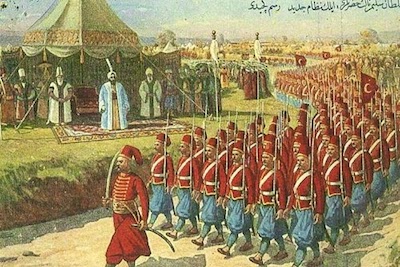
In the late 18th century, during the reign of Sultan Selim III (1789-1807), the Ottoman Empire began to break its isolation. Selim created a new European-style army called the Nizam-ı Cedid (New Order) and a new treasury called the İrad-ı Cedid (New Revenue). Factories and technical schools were opened with the assistance of European advisors. Nevertheless, Selim could not complete his reform schedule, as the Empire was preoccupied with rising nationalistic movements among its subjects. This erupted in the form of the Serbian Revolt in 1804 and a war with Russia in 1806-1812. Furthermore, Napoléon Bonaparte's Egyptian Expedition in 1798-1799 created additional challenges. The anarchy throughout the provinces was too great for Selim to manage. Pressure from the old army establishment and the Janissaries, who opposed the reforms, mounted. The Sheikh-ul-Islam was induced to grant a decree against the reforms, resulting in Selim's deposition and the placement of his nephew Mustafa on the throne.
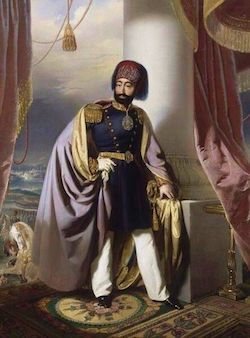
Sultan Mahmud II succeeded Mustafa IV, who had a short-lived reign. Mustafa was deposed by a rebellion and replaced by Sultan Mahmud II, a determined reformer. Mahmud began by decreasing the power of his opponents, accepting provincial ayan's rights in return for their recognition of the Sultan's rule. He launched expeditions to remove those who rebelled and diluted the influence of religious scholars, known as the ulema, and religious organizations. However, his most significant achievement was the abolition of the Janissary corps in 1826, in an episode known as the Vaka-i Hayriye (Auspicious Incident). This marked the establishment of a new modern Ottoman Army called Asakir-i Mansure-i-Muhammediye (Victorious Mohammedan Soldiers). This new army, modelled entirely on the earlier Nizam-ı Cedid corps, was organized along European lines and trained by European advisors, such as Helmuth von Moltke, who later became the chief commander of the German Army. From the Mahmudian period onwards, the army became a major instrument for protecting the state and the driving force of modernization.
Mahmud's reforms had immediate effects in areas such as European-style clothing, architecture, legislation, institutional organization, and land reform. He restructured the government by founding Ministries and launched advisory councils to prepare new laws and regulations. During his reign, the first Ottoman newspaper was issued, the postal service was launched, and the first population census was conducted. When Mahmud died in 1839, the empire was diminished territorially but consolidated administratively.
Sultan Mahmud II was succeeded by his son, Sultan Abdülmecid I, at a time marked by the rise of nationalist movements within the Empire's territories and the rebellion in Egypt. The imperial army was defeated by the rebel Egyptian viceroy Kavalalı Mehmed Ali Pasha, and only European intervention compelled Mehmed Ali Pasha to negotiate, thus saving the Empire from further attacks.
The Tanzimat Era
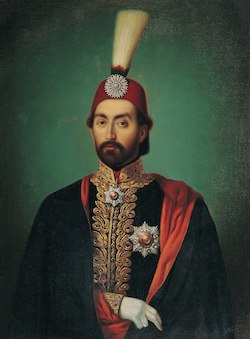
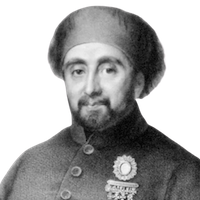
During the reign of Sultan Abdülmecid I, the Tanzimat (Reorganisation) reforms commenced, effectively initiating the modernization of the Ottoman Empire. These reforms were announced in November 1839 with an edict known as the Hatt-ı Şerif (Noble Edict) of Gülhane. The reforms aimed to promote Ottomanism among the ethnic groups and curb the rise of secessionist nationalist movements. The decree emphasized the equality of all subjects as Ottomans, regardless of their religion and race, and expressed principles of liberty, freedom from oppression, equality before the law, and security of life, property, and honor for all subjects of the empire. These reforms, implemented under the leadership of Abdülmecid's Grand Vizier Mustafa Reşid Pasha, also aimed at developing a fair taxation system, reorganizing the army, modernizing the financial system, establishing a secular education system, introducing modern laws, and creating provincial assemblies.
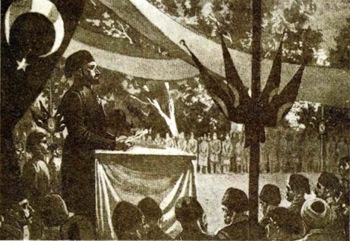
These reforms aimed to transform the traditional Ottoman system, which was rooted in theocratic principles, into that of a modern state. However, these measures failed to reverse the empire's decline. The empire faced significant challenges, including a lack of resources and a well-trained workforce. Furthermore, conservative elements opposing these reforms, claiming they were eroding the empire's fundamental Islamic character by adopting Western practices, posed a substantial obstacle for the reformers. Additionally, external interference from major European powers, ongoing conflicts, and the emergence of nationalist movements throughout the empire slowed down the reform efforts.
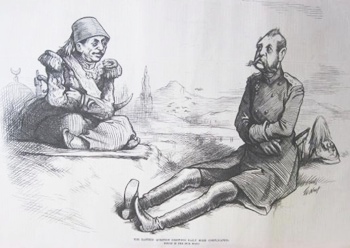
The European powers were well aware of the Ottoman Empire's precarious situation. As the dissolution of the Ottoman Empire appeared imminent, and the reforms were seen as futile, European nations engaged in a power struggle to protect their military, strategic, and commercial interests within the Ottoman territories. This struggle, often referred to as the "Eastern Question," had been a concern for European powers since the late 18th century, as they grappled with what to do about the weakening Ottoman Empire. As early as 1853, Tsar Nicholas of Russia said to the British envoy in St.Petersburg, Sir George Hamilton: "We have on our hands a sick man, a very sick man. It will be, I tell you frankly, a great misfortune if, one of these days, he should slip away from us before all necessary arrangements were made."
Crimean War
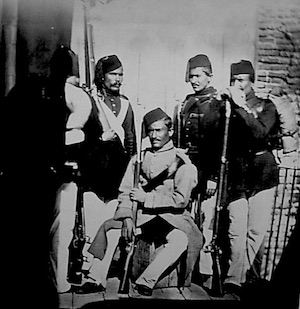
The European powers, however, did not share a consensus regarding these "arrangements" mentioned by Tsar Nicholas, as they each harboured different interests and objectives concerning the Ottoman Empire. This lack of unity eventually led to a conflict. In 1851, Napoleon III coerced the Ottomans into acknowledging France as the supreme authority in the Holy Land. This action displeased the Russians, prompting them to assert counterclaims. Citing two earlier treaties from 1757 and 1774, the Ottomans reversed their prior decision, officially abandoning the French treaty and insisting that Russia was the protector of the Christian faith within the Ottoman Empire.
In response, France flexed its military might by dispatching a warship to the Black Sea and combining it with assertive diplomacy. The Sublime Porte, the central government of the Ottoman Empire, once again altered its position, and a new treaty was struck between France and the Ottoman Empire. This treaty designated France, in conjunction with the Catholic Church, as the preeminent Christian authority in the Holy Land. Following this development, the Russian Army initiated mobilization along the Danube frontier. Concurrently, Britain, which was already engaged in rivalry with Russia in Central Asia, sought to preserve the territorial integrity of the Ottoman Empire.

Both Britain and France hoped for a diplomatic compromise between Russia and the Ottoman Empire, but when negotiations failed, the war began. Although Britain agitated the Ottomans against Russia, it was the latter who initiated the war. They used the security of the Orthodox Christian subjects in the Ottoman Empire as a pretext to undermine British influence on the Sublime Porte and advance their own interests.
Hostilities began on 3 July 1853 when the Russian Army entered the Danubian provinces of the Ottoman Empire with a force of 35,000 troops and 72 artillery guns. As fighting raged in the Balkans, Russian warships destroyed a squadron of Ottoman frigates at the Turkish Black Sea port of Sinop on 30 November 1853. The destruction of the Turkish fleet and heavy Ottoman casualties raised alarm in both Great Britain and France. In late March of 1854, after Russia ignored an Anglo-French ultimatum to withdraw from the Danubian Principalities, Great Britain and France declared war. The Kingdom of Sardinia later joined the conflict.
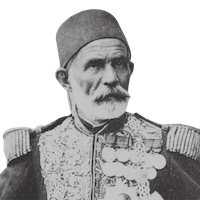
In September 1854, Allied troops landed in the Crimea, and after a year-long siege, Sevastopol surrendered in September 1855. Major battles, such as Alma, Balaklava, and Inkerman, occurred in 1854, while the Russians made gains in eastern Turkey, capturing Kars in November 1855.
With Tsar Alexander II's ascent to the Russian throne, the capture of Sevastopol, and Austria's threat to join the war on the side of the Allies, peace negotiations took place, resulting in the Treaty of Paris in March 1856. The Ottoman Empire emerged from the war with territorial losses, and the treaty granted it recognition as an equal member of the Concert of Europe, theoretically preserving its territorial integrity. Nonetheless, the financial burdens of the war forced the empire to engage in foreign borrowing, ultimately contributing to its economic collapse.
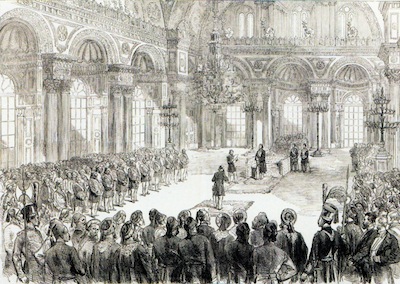
After the end of the Crimean War, the Tanzimat reforms were bolstered by a comparable statute issued in February 1856, known as the Islâhat Hatt-ı Hümâyûnu (Imperial Reform Edict). This edict pledged to uphold equality in education, government appointments, and the administration of justice for all, irrespective of their religion or race. It drew inspiration from the contemporary European ideals of the era.

During the reign of Sultan Abdülaziz, who succeeded Abdülmecid, reforms continued under the guidance of two capable chief ministers, Fuat Pasha and Ali Pasha. However, the Empire's economy was deteriorating rapidly, exacerbated by imprudent expenditures such as the construction of palaces along the Bosphorus and a growing debt burden. Chaos prevailed in the Balkans due to Russian-sponsored uprisings driven by nationalist motives. Abdülaziz found it increasingly difficult to manage these pressures, leading to heightened public discontent. Consequently, his ministers deposed him on May 30, 1876, and his death a few days later was officially attributed to suicide.
Among Abdülaziz's significant achievements were the modernization of the Ottoman Navy, which, by 1875, ranked third in the world after the British and French navies. He also established the first Ottoman railroad network.
While the Tanzimat era had its share of successes, it raised serious doubts about the Ottoman state's ability to handle ethnic uprisings. Greece had declared its independence in 1829, and the reforms failed to quell the growing nationalism in the Danubian Principalities and Serbia, which had enjoyed semi-independence for nearly six decades. By 1875, Serbia, Montenegro, Bosnia, Bulgaria, Wallachia, and Moldova all proclaimed their independence from the Empire.
Abdülhamid’s Reign
Sultan Mehmed Murad V's reign lasted only 93 days before he was deposed due to mental illness. He was succeeded by his brother Sultan Abdülhamid II, who would be the final Sultan to wield autocratic power. Abdülhamid assumed the throne during a period of domestic and international crises. Ethnic tensions persisted in the Balkans, and they had flared up among Armenians in Eastern Anatolia, causing increased anxiety within Muslim communities. Terrified refugees were fleeing from territories that had broken away from the Empire, and conflicts were widespread. The turmoil resulting from military operations had led to famine in certain regions, and the Treasury was in dire straits.
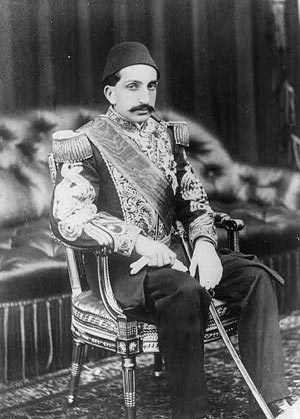
Abdülhamid recognized the limitations of his position and attempted to navigate the crises by exploiting the differences among his domestic and foreign adversaries. He pitted Russia against Britain and played Germany against both. He established tribal regiments among the Kurds, following the model of the Russian Cossacks, as a means of co-opting and placating unruly Kurdish tribes. These regiments helped in keeping Armenian nationalists in check. However, when attacks by Armenian nationalists resulted in violent and disproportionate reprisals by local Muslims, Abdülhamid's strategies failed to provide an effective substitute for stable governance.
During that period, a faction of nationalist intellectuals was gaining influence within the bureaucracy. This group, known as the Yeni Osmanlılar (Young Ottomans) and led by the influential Grand Vizier Midhat Pasha and the popular poet Namık Kemal, advocated for a constitutional and parliamentary government. They were dissatisfied with the bureaucratic absolutism of the Tanzimat, as they believed that the emulation of Western norms did not align well with the political culture of the Ottoman Empire.
Sultan Abdülhamid II collaborated with the Young Ottomans to establish some form of constitutional framework. As a result, the constitution, known as the Kanun-u Esasi, was proclaimed on 23 December 1876, and the Parliament convened on 19 March 1877. This marked the first comprehensive Ottoman constitution and was a pioneering development in the Islamic world. The constitution retained full executive powers for the Sultan, with individual ministerial responsibility. In the legislative process, the Sultan was aided by a two-chamber Parliament, consisting of the indirectly elected lower house, Heyet-i Mebusan, and the upper house, Heyet-i Ayan, whose members were nominated by the ruler.

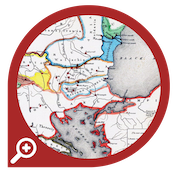 The constitution, however, failed to quell the turmoil in the Empire. Instead of pacifying the Russians, the Parliament only accelerated the Russian declaration of war. Abdülhamid II exploited the war as a pretext to suspend the constitution and indefinitely close the Parliament. He also exiled its architect, Midhat Pasha. The Turco-Russian War concluded with an Ottoman defeat. The Sublime Porte was compelled to officially recognize the independence of Serbia, Romania, and Bulgaria, ceding some of its eastern territories to Russia. Later, under pressure from the Great Powers, the treaty underwent revisions at the Congress of Berlin in 1878. While these revisions reduced the considerable advantages gained by Russia, they marked the end of centuries of Ottoman sovereignty in the Balkans.
The constitution, however, failed to quell the turmoil in the Empire. Instead of pacifying the Russians, the Parliament only accelerated the Russian declaration of war. Abdülhamid II exploited the war as a pretext to suspend the constitution and indefinitely close the Parliament. He also exiled its architect, Midhat Pasha. The Turco-Russian War concluded with an Ottoman defeat. The Sublime Porte was compelled to officially recognize the independence of Serbia, Romania, and Bulgaria, ceding some of its eastern territories to Russia. Later, under pressure from the Great Powers, the treaty underwent revisions at the Congress of Berlin in 1878. While these revisions reduced the considerable advantages gained by Russia, they marked the end of centuries of Ottoman sovereignty in the Balkans.
Abdülhamid II adopted ruthless and frequently repressive authoritarian measures to address separatist tendencies. He concentrated much of the Empire's administration into his own hands but also continued reforms in various sectors, including telegraph communications, railways, and education. He believed that the only means to save the Empire was to formulate a new and more relevant ideological principle. This involved reshaping the concept of the Ottoman Sultan as Caliph, commanding the allegiance of not only Ottoman subjects but all Muslims. He considered his role as Caliph to be superior to that of Sultan, emphasizing Islamism over Ottomanism. The objective was to secure the loyalty of non-Ottoman Muslims and challenge the encroachment of European colonial powers.
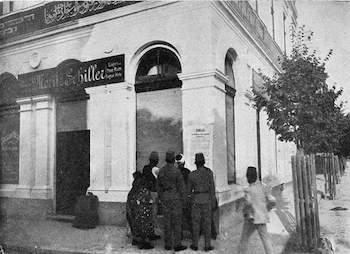
The empire found itself in an irreversible state of decline, and this ideological shift proved insufficient to halt the ongoing deterioration. Territorial losses continued to mount: in 1878, Cyprus came under British control; France, which already held sway over Algeria, invaded Tunisia in 1881; Britain took control of Egypt's government; Crete united with Greece in 1908; Austria-Hungary annexed Bosnia in the same year, and Bulgaria declared its independence.
These territorial losses were primarily a consequence of the empire's weakening, stemming from its failure to adapt to the Industrial Revolution and its eventual dissolution in the face of rising nationalism triggered by this revolution.
Abdülhamid's concentration of power in his own hands epitomized his profound apprehension regarding the decentralization of authority. He believed this would pave the way for the Balkan provinces to secede from the Empire. His fears extended to a deep-seated dread of being deposed, which over time metamorphosed into paranoia. He established an intricate network of spies and agents, overseeing an extensive system of intelligence gathering. He retreated to the Yıldız Palace, seldom making public appearances. His apprehensions, in fact, proved to be well-founded. In addition to coup attempts in the earlier years of his reign, opposition groups sought to oust him in 1895, 1896, 1902-03, and assassination plots were hatched in 1899 and 1905. Abdülhamid was well aware of the conspirators and dissidents. Some were imprisoned, others exiled, some removed from their positions, and many were coaxed into submission.
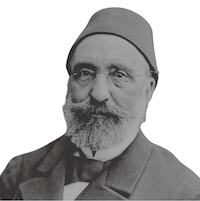
The murder of Midhat Pasha was an extraordinary event. Abdülhamid received intelligence indicating that Mehmed Murad V had fully recovered, and that Midhat Pasha, the reformist, was plotting to return him to the throne—a position he could hold for only three months. Abdülhamid fabricated excuses, accusing a group of individuals, including Midhat, of being responsible for the death of Sultan Abdülaziz. He alleged that Abdülaziz had not taken his own life, but had been murdered. The suspects were brought to trial and sentenced to death; however, Abdülhamid subsequently commuted their death sentences, and Midhat Pasha was exiled to Taif, a city in the Mecca province, which is part of modern-day Saudi Arabia. In 1884, Midhat Pasha was found strangled to death. Abdülhamid claimed that he had never issued such an order, but suspicions about his involvement lingered for the remainder of his life. Midhat's friend and the patriotic poet Namık Kemal were imprisoned for a few months, with Namık Kemal being appointed as the governor of one of the Aegean islands.
As Andrew Mango aptly put it, "Abdülhamid was more of a manipulator than a bloodthirsty tyrant." In the later years of his 33-year reign, Abdülhamid's autocratic powers began to face challenges from a group of intellectuals, students, and young army officers who demanded the restoration of the Constitution. This group was known as the Jön Türkler (Young Turks).
![]()
PAGE LAST UPDATED ON 8 DECEMBER 2023